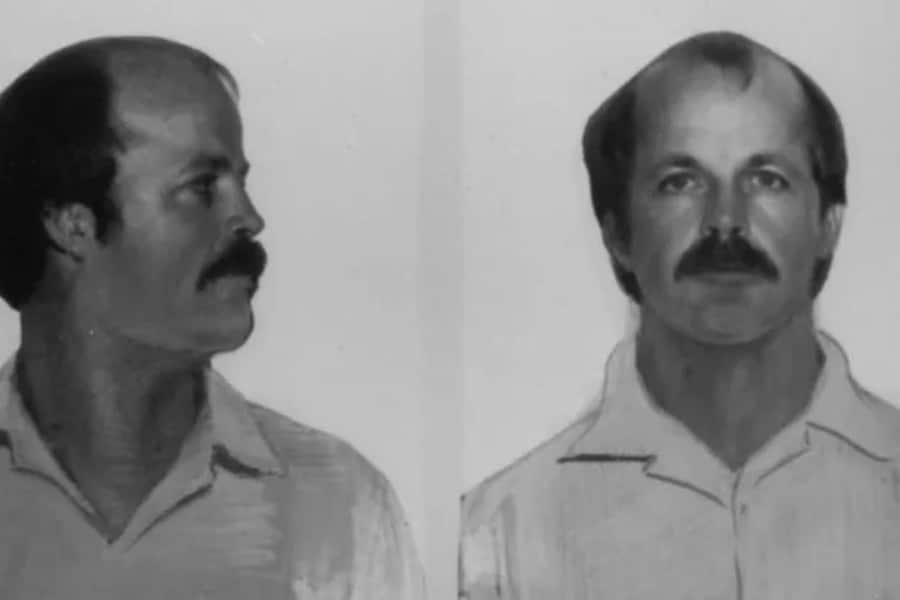
Christopher Wilder, famously dubbed the “Beauty Queen Killer” and the “Snapshot Killer,” remains a focus of criminal investigations and media narratives long after he died in 1984 during a confrontation with the New Hampshire State Police.
This Australian-American millionaire, who led a dual life as a race car driver and photographer, was responsible for a known series of brutal attacks on women, culminating in a two-month killing spree that resulted in at least eight confirmed deaths and several disappearances.
His notorious legacy is explored anew in the Hulu documentary series “The Beauty Queen Killer: 9 Days of Terror,” casting light on both his heinous acts and the stories of his survivors.
One poignant narrative within the series is that of Tina Risico, a 16-year-old who was abducted by Wilder. She endured a terrifying nine-day ordeal across the country, during which Wilder manipulated her into assisting him in scouting potential victims at shopping malls, exploiting his guise as a photographer offering modeling opportunities.
This method of operation, which involved luring young girls under the pretense of professional photography and modeling, became a chilling hallmark of Wilder’s approach.
While Wilder’s death brought an end to his immediate terror, many questions remain about his potential involvement in other unsolved murders, particularly in Florida and New York. The unresolved case of Tammy Jo Alexander highlights these lingering doubts. Alexander’s remains were discovered in 1979 in a New York cornfield and were not identified until 2015.
Known for hitchhiking and wearing a jacket linked to auto sports—a connection to Wilder’s racing background—her tragic fate bears the potential marks of Wilder’s involvement.
Further connecting Wilder to unsolved cases, Shari Lynne Ball’s disappearance from Boca Raton, Florida, in 1983, followed by the discovery of her body in western New York, raises suspicions. Ball had told her family she was traveling to New York with a friend to pursue modeling opportunities, a narrative disturbingly similar to Wilder’s known predatory tactics. The New York State Police have noted the intriguing possibilities here, given Wilder’s method of operation and geographic links.
Wilder’s trail also leads to Palm Beach County, Florida, where he resided after evading police scrutiny in Australia in connection with the 1969 murders of two teenage girls. His name has surfaced in several unsolved murders in this region.
Notably, 18-year-old Tammy Lee Leppert vanished in 1983 from Rockledge, Florida. Leppert, who had a background in modeling and appeared in the film “Spring Break,” was last seen with Wilder, according to allegations made by her mother, Linda Curtis, in a lawsuit filed before Wilder’s death.
Adding to the complexity of Wilder’s case is the discovery of unidentified women’s remains on property he owned in Loxahatchee. Found in 1982 by a real estate agent, these remains, located north of Okeechobee Boulevard, deepen the mysteries surrounding Wilder’s activities and potential undiscovered crimes.
The Hulu series not only revisits Wilder’s horrifying actions but also stimulates ongoing discussions about other cold cases that might be connected to him. It underscores the importance of continued investigative efforts in these long-standing mysteries, offering a combination of historical review and contemporary forensic analysis to solve these tragic puzzles potentially.
As the documentary garners attention, it serves as a grim reminder of the crucial role of vigilance and thorough investigation in bringing justice to the victims of such heinous crimes. For the families of the victims and the communities affected by Wilder’s terror, there remains a strong desire for closure and answers, which current technologies and renewed investigative interest might eventually provide.
Christopher Wilder’s story is not just one of a criminal’s ruthless legacy but also a narrative about the resilience of those who survived his cruelty and law enforcement’s relentless pursuit of justice. As new leads are pursued and old cases are reexamined, there is hope that the full extent of Wilder’s crimes will be uncovered, bringing long-awaited peace to the many who still seek answers.
As investigations continue, the shadow of Christopher Wilder looms large, not just as a reminder of the past but as a catalyst for ensuring that similar tragedies are prevented in the future. Through documentaries, ongoing police work, and public awareness, society can strive to understand and address the darkest aspects of human behavior, ensuring that the legacy of victims is not forgotten and that justice is ultimately served.








